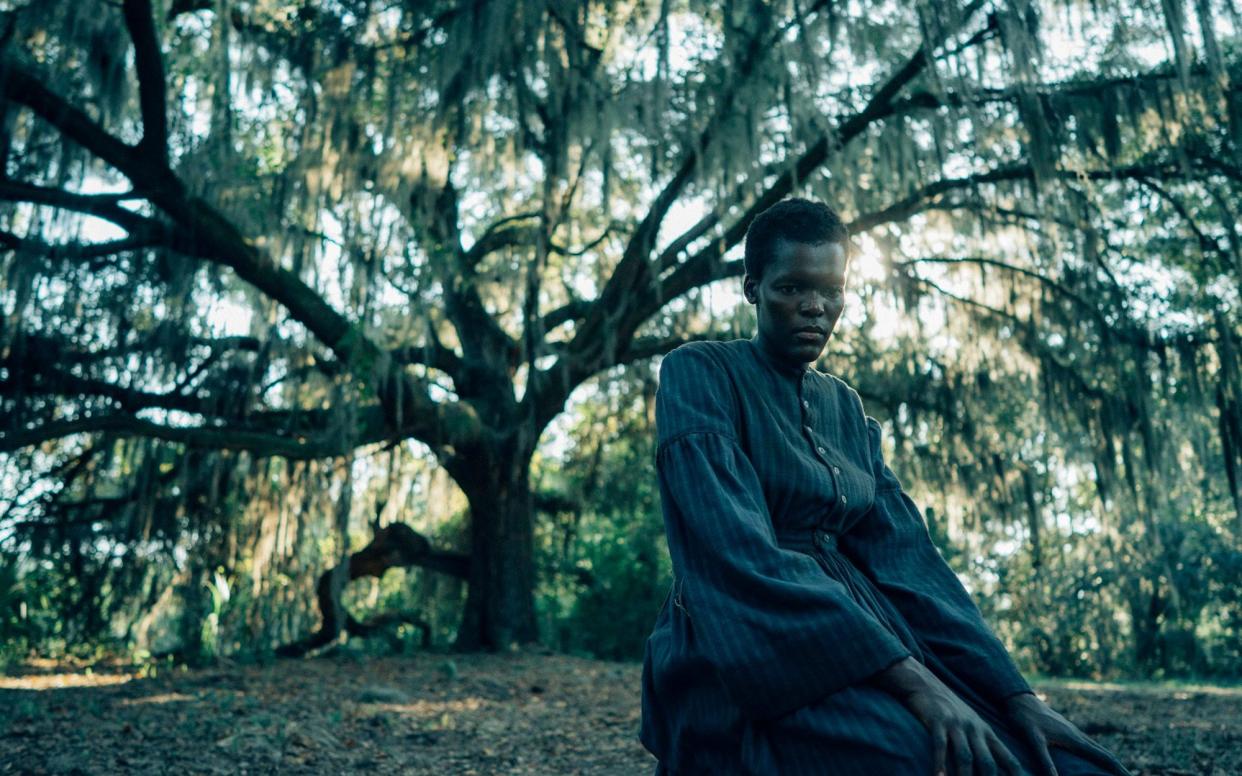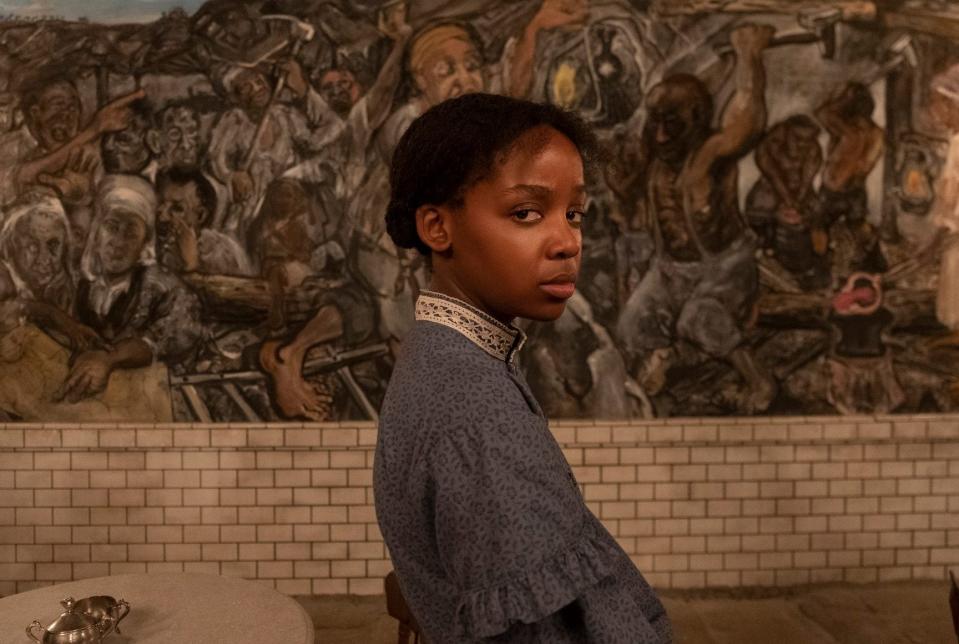The Underground Railroad, review: quite simply one of the most powerful pieces of television you will ever see

- Oops!Something went wrong.Please try again later.
- Oops!Something went wrong.Please try again later.
- Oops!Something went wrong.Please try again later.
There are two ways of looking at The Underground Railroad, Barry Jenkins’s adaptation of Colson Whitehead’s Pulitzer winning novel. The first, and the most important, is that it is a towering achievement, quite simply one of the most powerful pieces of television you will ever see. The ten-part drama tells the story of Cora (Thuso Mbedu), a slave on a pre-Civil War Georgian plantation who, unable to endure any more of the unspeakable abuse meted out by her master, Terrance Randall (Benjamin Walker), runs away.
Together with her companion and soulmate Caesar (Aaron Pierre), and aided by various abolitionists, they discover the underground railroad of the title – not the figurative routes of 19th-century US history (where a network of people helped fugitive slaves escape north) but in this telling a literal railway that burrows under the southern states, a mystical lifeline that offers no set destinations, just a way out.
Cora is the series’s main focus but not its sole interest – every character, from Cora to Caesar to the barbaric "Slave Hunter" Ridgeway (Joel Edgerton) to another runaway Grace (Mychal-Bella Bowman), who Cora meets hidden in an attic in North Carolina, gets their story fully told. And how. You should be aware that from the very first frame this is an unflinching inspection of humanity at its worst. There are many terrifying, explicit scenes of savagery and vile hatred. Ride The Underground Railroad and you are entering the heart of darkness.
Set against that, though, is the staggering beauty of Jenkins’s film-making. There is bright radiance and diffuse light to go with the lugubrious shadow. There are landscapes and vistas to make the heart soar and, thanks to stellar performances across the board, a sense of wonder infuses the whole – wonder at the will to survive, to live and to love.
And if that sounds all a bit wafty, not a bit of it: every episode, some of which clock in at over an hour, others of which are done in 20 minutes, is underpinned by a suspense narrative that is almost unbearably tense. Ridgeway, the hunter, is a presence felt most fiercely when he’s not there. It may be set in the 19th century American South but that tension and its sibling, fear, is a brilliant evocation of what endemic racism must feel like – a tacit threat, an uneasy subtext that is always present.

I watched all 10 hours of The Underground Railroad in two sittings and came away unable to shake a series of images, tableaux and even the four-chord motif that is played again and again. On finishing it you get that curious mix of fatigue and elation that comes with immersing oneself in the most profound tragedies, such as a mammoth King Lear or Mozart’s Requiem.
On its own, then, The Underground Railroad is superb, but it also represents television’s new permanent way. What you’re watching is the very pinnacle of what’s come to be called "Peak TV". It comes to you not as a DVD box set or once a week on Sunday-night BBC Two, but on Amazon Prime, which until relatively recently was a place you bought stuff online. Amazon is one of the largest companies in the world, with Bezos-ly deep pockets. Absolutely no expense has been spared in making every frame of The Underground Railroad fit Jenkins’s vision. It looks and sounds astounding. Buy or borrow the very biggest TV you can find (and you will need it to even see some of the crepuscular photography), fit it up with a military-grade sound system and simply wallow in what television is capable of today. It makes the much-abused epithet ‘cinematic’ redundant.
With such huge resources to draw on and a big-name movie director at the helm, of course, there are times when the luxurious long shots, the heart-rending stares to camera, can verge on longueurs. One imagines that when you hire Jenkins and hand over a couple of hundred million you don’t then go and tell him to rein it in a bit because you’ve got Zumba to get to. A similar thing happened when Martin Scorsese worked for HBO on Vinyl and Baz Luhrmann on The Get Down for Netflix, and without doubt "auteur sprawl" can lead to some self-indulgence.
Unlike those two shows, however, Jenkins never lets character and story be obscured by technique (and if reaching for the stars and sometimes overshooting is the price to pay for moments so transcendent they verge at times on the mystical, then Jenkins is welcome to go on all he likes). This is momentous, rhapsodic film-making that pushes television to places it has never been before. Get on board.
The Underground Railroad is available from Friday 14 May on Amazon Prime Video

